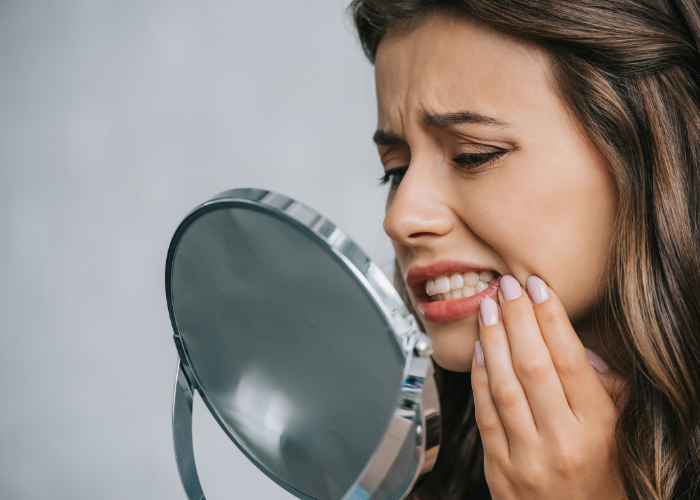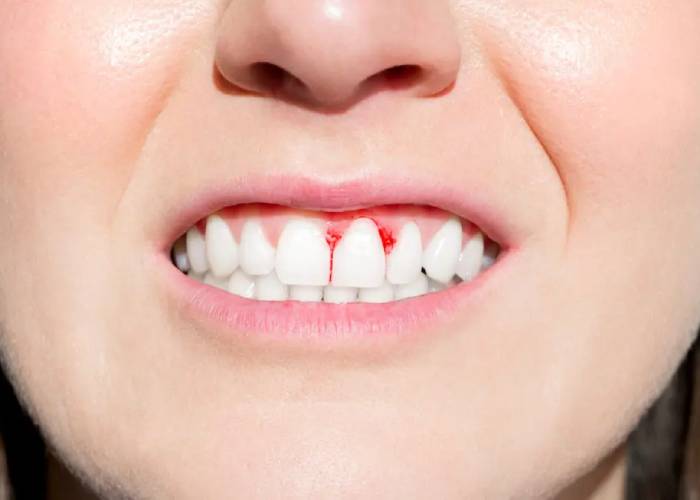Healthy Gums: What You Need to Know to Avoid Serious Problems
 Did you know that gum disease (also known as gingivitis) is one of the most common oral health conditions in adults. Believe it or not, more than 47 percent of individuals above the age of 30 suffer from this ailment.
Did you know that gum disease (also known as gingivitis) is one of the most common oral health conditions in adults. Believe it or not, more than 47 percent of individuals above the age of 30 suffer from this ailment.
If left untreated, serious damage can occur that may lead to complications. Prevention is therefore the best option if you wish to avoid problems.
Let's first take a look at some of the primary symptoms of gum disease. We can then move on to discuss how to get healthy gums by embracing a handful of relatively straightforward habits. After all, there is no better time to make the necessary changes than the present.
What are the Symptoms of Gum Disease?
Gum disease is a rather insidious condition due to the fact that the symptoms tend to develop over time. It is therefore much more difficult to spot before damage has already been done.
This is also why it is crucial to see a dentist regularly. Here are some of telltale symptoms to keep an eye out for:
- Inflamed or tender gums
- A noticeable increase in their redness
- Pain and/or bleeding when brushing or flossing
Note that only the soft tissues are being affected at this stage. It is therefore possible to reverse the effects with a few changes in your routine.
Otherwise, you will allow gum disease to evolve into full-blown periodontitis – which can lead to loose teeth – and eventually tooth loss.
How to Know if Gum Disease has Progressed to Periodontitis
Periodontitis occurs when gum disease begins to impact the underlying bones. The problem here is that more permanent issues such as a loss of bone density and loose teeth can result -- leading to much more intensive treatment options.
We should also remember that unlike gum disease, it is nearly impossible to reverse the damage caused by periodontitis. Some of the signs that you might at risk include:
- Gums that have begun to pull back from the teeth
- Bad breath or a foul taste within the mouth for no apparent reason
- Teeth that have become loose or have already fallen out
It is absolutely critical to seek the advice of a dentist if any of these symptoms are present. If caught at a relatively early stage, it is often possible to mitigate the amount of damage caused by periodontal disease.
Keeping the Bacteria at Bay
As is often the case with your oral health, prevention is undoubtedly the best medicine. Let us now examine how to get healthy gums as well as how to ensure that they remain intact for a lifetime.
Brushing and Flossing
Brush your teeth at least twice per day and make it a point to floss once -- preferably before going to sleep in the evening.
These seemingly simple actions will help to remove any particulate matter that might otherwise become lodged between the teeth and the gums.
If your gums are already sensitive, options such as a soft-bristled toothbrush and a water jet for flossing are viable solutions.
Use a Mouthwash
Mouthwashes are another potent tool within your arsenal. Some of these (known as therapeutic mouthwashes) have been specifically formulated to eliminate plaque and tartar while simultaneously treating the symptoms of gum disease.
You could also speak with your dentist about a prescription in the event that your gum disease has already entered into a more advanced stage.
Abstain from Smoking
Individuals who regularly smoke cigarettes are twice as likely to develop gum disease. The issue here is that smoking dramatically impacts the ability of your immune system to fight off infections.
A weakened immune system can directly affect the health of your gums. Furthermore, it will be much more difficult for the gum tissue to heal itself if damage has already taken place. This is yet another reason why it is finally time to give up cigarettes once and for all.
The Benefits of Fluoride
Fluoride is often touted for its ability to strengthen the enamel of your teeth. While this is certainly the case, we should also mention that this element is just as capable of protecting the gums from conditions such as gingivitis.
Many toothpastes and mouthwashes contain fluoride as an active ingredient. There may also be times when a dentist will be able to recommend products with a higher concentration in the event that gum disease has already been detected.
Visit the Dentist on a Regular Basis
This final recommendation is arguably the most practical and easy to follow. Not only will regular dental exams and cleanings help to spot gum disease at an early stage, but it’s the best way to remove had layers of tartar that might already be present.
A Small Price to Pay
Appreciating how to get healthy gums is not necessarily a complicated process. In many cases, it could involve nothing more than adopting the habits listed above. The main takeaway point here is that unlike some other oral conditions such as a serious cavity or a cracked tooth, gum disease is reversible if detected and treated early.
Are you currently experiencing any of the symptoms mentioned here? If so, speak with your dentist as soon as possible. Solutions could very well be closer than you think.
Sources:
1. https://magazine.medlineplus.gov/article/gum-disease-by-the-numbers
2. https://www.healthline.com/health/dental-and-oral-health/ways-to-keep-gums-healthy#gum-disease
3. https://www.cdc.gov/tobacco/campaign/tips/diseases/periodontal-gum-disease.html







 Most modern dental practices employ a dental hygienist as well as a dentist. Their role is very important because hygienists are concerned with preventative dental work. Often, they are qualified as dental therapists, too.
Most modern dental practices employ a dental hygienist as well as a dentist. Their role is very important because hygienists are concerned with preventative dental work. Often, they are qualified as dental therapists, too. _0_o.png) Acrylic dentures are a common tooth replacement option. Dentures can be partial or full depending on how many teeth need replacing.
Acrylic dentures are a common tooth replacement option. Dentures can be partial or full depending on how many teeth need replacing.


